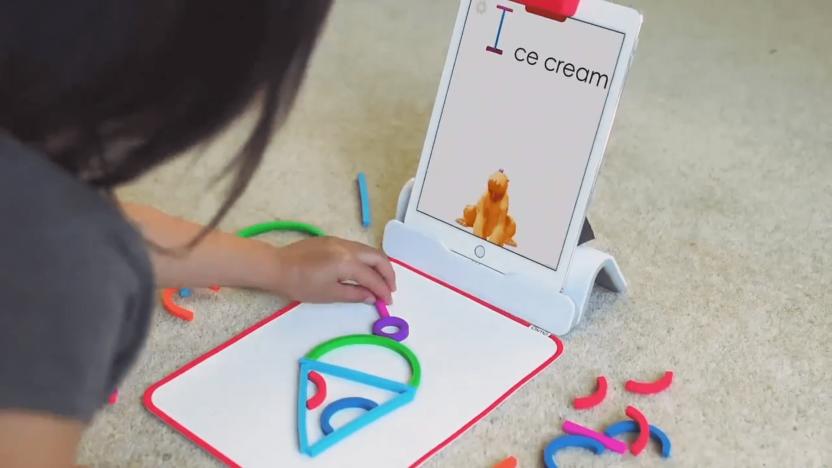EdTech
Latest

Google’s ‘Assignments’ tool flags plagiarism and missing sources
Google is setting out to make plagiarism harder than ever. The search giant today announced the launch of Assignments, a new grading software for higher education instructors who use G Suite for Education. Formerly known as Coursework, Assignments will allow instructors to create, assign and grade coursework with Google Docs and Drive. To boot, all student work turned in through Assignments and Classroom (its K-12 counterpart) will receive its own "originality report", a new feature that is essentially a litmus test for plagiarism.

Osmo releases iPad learning kit for preschoolers
Here's an interesting alternative to playing your toddler more Sesame Street reruns: Edtech company Osmo has launched an iPad-enabled learning tool for the preschool set. Aimed at children between the ages of 3 to 5 years old, the Little Genius Starter Kit comes with four interactive games aimed at teaching youngsters the alphabet, the essentials of drawing and creative problem-solving. The company known for its iPad hookups that teach kids how to code or let them build their own racecars is diving deeper into traditional core skills like building vocabulary or learning math. Osmo already sells a Genius Starter Kit aimed at teaching older children spelling and arithmetic; this new kit is similar, just aimed at younger kids..

Hackaball, the toy kids can program, rolls out in March
After launching on Kickstarter last year, Hackaball, a programmable toy for kids, is almost ready for prime time. It's already sold out its initial pre-order run, but you'll soon be able to snag another batch for $85. Hackaball is expected to ship in March, the company says. To refresh, Hackaball looks like a fairly typical toy ball, but inside it's got a six-axis motion sensor and multi-color LED lights. Kids can program it to do all sorts of things using that sensor — it can change color when you throw it, or if you're not holding the ball steady enough. The idea is that kids will be able to create all sorts of games and learn the basics of programming.

Can technology solve America's literacy problem?
Roughly 36 million adults in the United States read English at or below a third-grade level. For a predominantly English-speaking country, that's a massive problem. Without an elementary knowledge of the language, this huge portion of the adult population faces a struggle to get by. Finding a job and generally progressing in a career is an obvious issue, but everyday tasks are also difficult. Understanding taxes, helping a child with homework, filling out health care forms or following instructions on medication; these are skills that anyone reading this article takes for granted, but many others toil over daily. We know the situation, but what's the solution? XPRIZE, an organization best known for its efforts to send private rovers to the moon and create a real-life Tricorder, has created a competition to prove that technology is the answer.


